Three billion years ago, Earth was a very different place.
-
The NASA Astrobiology Institute at AbSciCon 2019

The first Astrobiology Workshop was held at Ames Research Center (Moffett Field, CA) on September 9-11, 1996. It was by all accounts a resounding success, bringing together life scientists and space scientists for a truly interdisciplinary sharing of ideas related to life in the universe. Soon afterward, NASA’s vision for its new Astrobiology Institute (the NAI) was celebrated at the Institute’s first meeting Nov. 5-7, 1998 also at NASA Ames Research Center. Dr. Edward Weiler, Acting Associate Administrator for the NASA Office of Space Science, Scott Hubbard, interim manager of the NASA Astrobiology Institute and a host of prominent ...
June 19, 2019 • Written by: NAI • Report issue
-
New Study Dramatically Narrows the Search for Advanced Life in the Universe
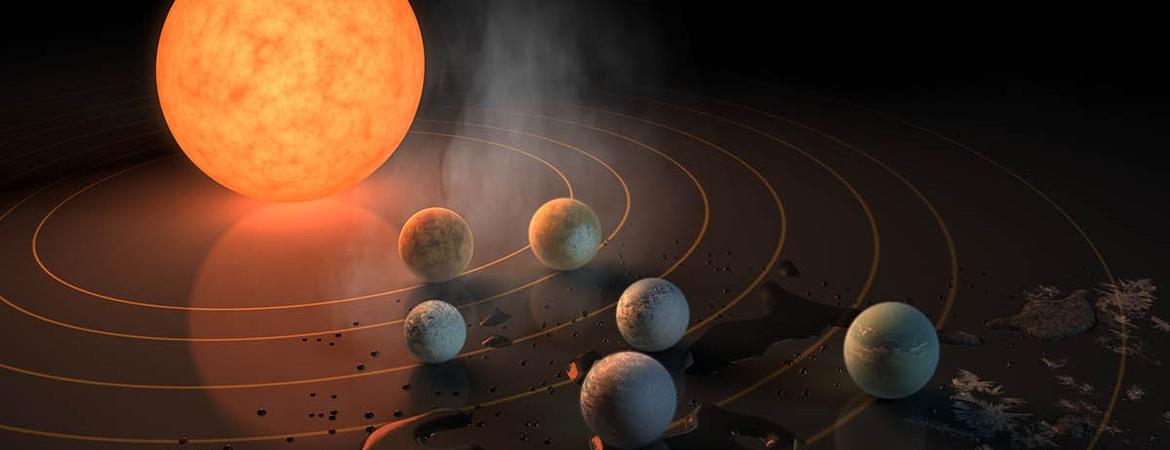
Three planets orbiting TRAPPIST-1 fall within that star’s habitable zone. Credit: R. Hurt/ NASA/JPL-Caltech/Toxic gases limit the types of life we could find on habitable worlds.
RIVERSIDE, CA – Scientists may need to rethink their estimates for how many planets outside our solar system could host a rich diversity of life.
In a new study, a UC Riverside–led team discovered that a buildup of toxic gases in the atmospheres of most planets makes them unfit for complex life as we know it.
Traditionally, much of the search for extraterrestrial life has focused on what scientists call the “habitable zone,” defined as the range of distances from a star warm enough that liquid ...
Source: [UC Riverside]
June 18, 2019 • Written by: Jules Bernstein • Report issue
-
Aomawa Shields on the Importance of Women in STEM

Aomawa Shields. Credit: NASAA recent article in Teen Vogue urges us to celebrate the Apollo 11 Moon landing anniversary through the lens of the contributions of women to that success, and to STEM in general.
The article features 12 female STEM advocates from different fields, each with her own perspective and approach to helping young girls get into, and climb the ladder of success, in STEM.
One of those mentioned is Aomawa Shields, astrobiologist and founder of Rising Stargirls.
Shields is an assistant professor of physics and astronomy at the University of California Irvine. She is a member of the NAI CAN 4 ...
June 17, 2019 • Written by: Yael Kovo • Report issue
-
ROSES-19 Amendment 8: Interdisciplinary Consortia for Astrobiology Research (ICAR)

Image credit: NSPIRESROSES-19 Amendment 8: This amendment releases a new TBD program element in C.23 Interdisciplinary Consortia for Astrobiology Research
The Planetary Science Division intends to solicit Interdisciplinary Consortia for Astrobiology Research (ICAR) to support the goal of the NASA’s Astrobiology program in the study of the origins, evolution, and distribution of life in the universe. It is anticipated that research areas in this cycle will include: prebiotic chemistry and early Earth environments, early life and increasing complexity, and the habitability and biosignatures on exoplanets. PIs selected as a result of proposals to this program element will become members ...
Source: [NSPIRES]
May 13, 2019 • Posted by: Yael Kovo • Report issue
-
How Salts on the Surface Could Aid in Modeling Europa's Ocean
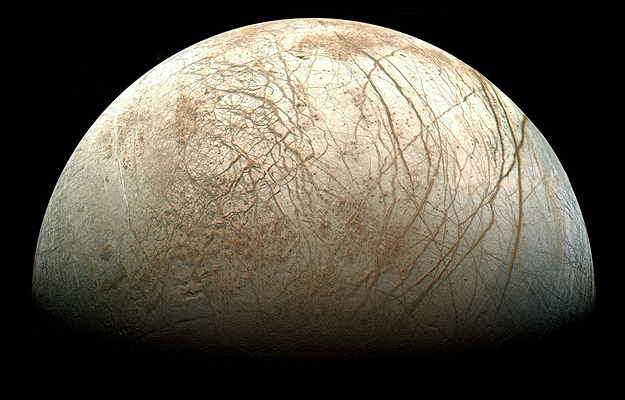
Europa Image credit: NASAExcerpted from Astrobiology Web:
Europa is one of Jupiter’s 79 moons, and one of the largest moons in the Solar System. Inside Europa, beneath sheets of ice, liquid water rests on top of a rocky core, similar to Earth, and the chemical interaction between the water and the rock could make Europa one of the best known candidates for other life in our Solar System.
The global ocean believed to exist beneath Europa’s thick ice shell is often cited as one of the most likely places in the solar system to find evidence of extraterrestrial habitable environments or even extant ...
Source: [Astrobiology Web]
May 13, 2019 • Posted by: Yael Kovo • Report issue
-
The Habitability of Titan and its Ocean
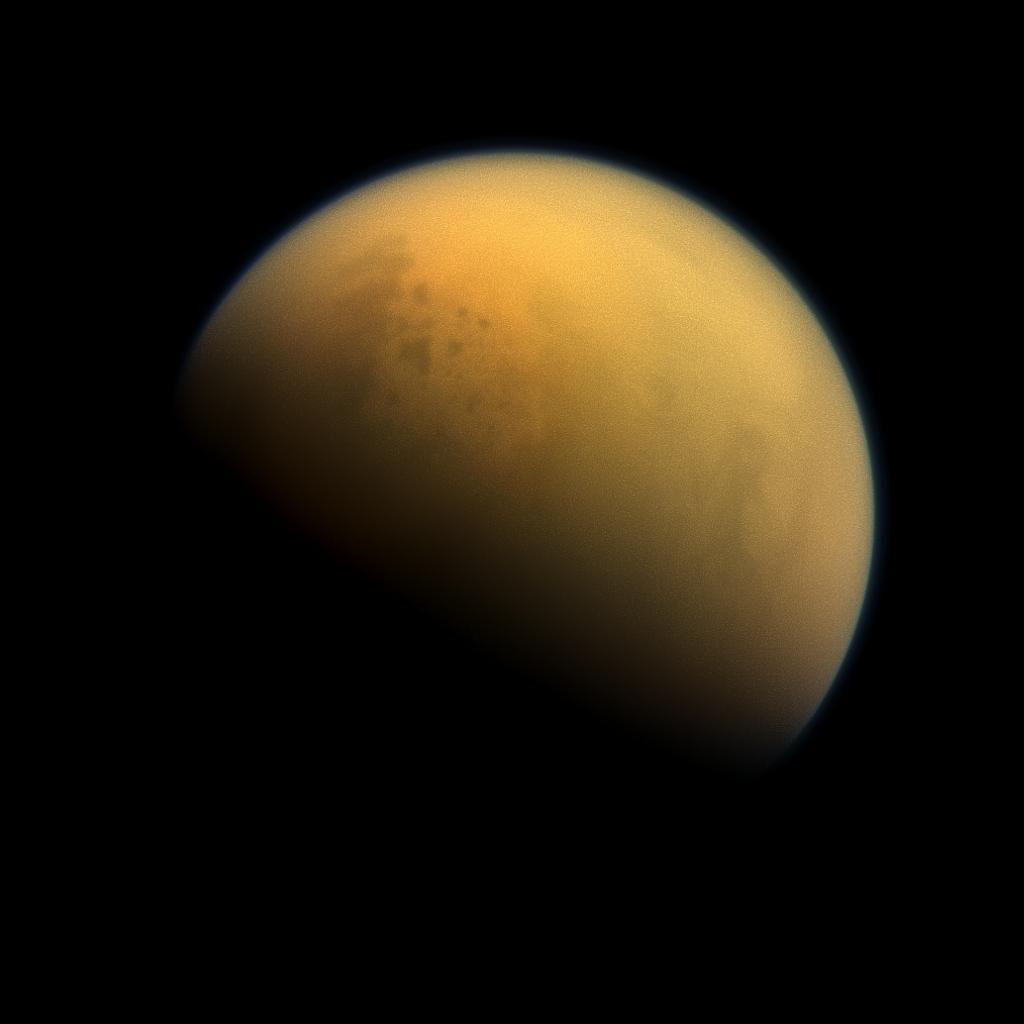
Saturn’s largest moon, Titan, hides a subsurface ocean that potentially could support life. Image credit: NASA/JPL–Caltech/Space Science Institute.Saturn’s largest moon, Titan, is a hotbed of organic molecules, harboring a soup of complex hydrocarbons similar to that thought to have existed over four billion years ago on the primordial Earth. Titan’s surface, however, is in a deep freeze at –179 degrees Celsius (–290 degrees Fahrenheit, or 94 kelvin). Life as we know it cannot exist on the moon’s frigid surface.
Deep underground, however, is a different matter. Gravity measurements made during fly-bys by NASA’s Cassini spacecraft revealed that Titan contains an ocean beneath its ice shell, and within this ocean, conditions are potentially suitable ...
May 09, 2019 • Written by: Keith Cooper • Report issue
-
NASA Choctaw & Chickasaw Nation STEM Camps

Drs. Christopher Materese and Gustavo Cruz-Diaz pose with Chickasaw students at the Chickasaw Nation Aviation and Space Academy (CNASA). NASA Ames NAI team participation in the STEM camp is provided through funding from NASA’s Astrobiology Institute CAN 7 grants program. Image credit: ARC NAI CAN7 TeamIn 2018, Drs. Gustavo Cruz-Diaz and Christopher Materese of the NAI Ames CAN 7 Team participated in the Chickasaw Nation Aviation and Space Academy (CNASA) held in Ada, Oklahoma. The Chickasaw Nation has been conducting this week-long camp over the past four summers, in order to encourage their Native American youth to consider careers in the STEM (Science, Technology, Engineering, and Mathematics) fields.
Their presentation included hands-on science demonstrations, teaching them about molecular properties, chromatography, spectroscopy, refractive properties of light, and electromagnetism. The students were very interested in the presentation, in particular, those related to the search for life on ...
Source: [ARC NAI CAN7 Team]
April 29, 2019 • Written by: Yael Kovo • Report issue
-
Evolution of Multicellularity in Response to Predation

Image credit: Jacob BoswellThe transition from unicellular to multicellular life was one of a few major events in the history of life that created new opportunities for more complex biological systems to evolve. Predation is hypothesized as one selective pressure that may have driven the evolution of multicellularity, as most predators can only consume prey within a narrow range of sizes.
A team of scientist from University of Montana and Georgia Institute of Technology show that de novo origins of simple multicellularity can evolve in response to predation. They subjected outcrossed populations of the unicellular green alga Chlamydomonas reinhardtii to selection by the ...
Source: [Scientific Reports]
April 25, 2019 • Written by: Matthew Herron et al. • Report issue
-
Redox and pH gradients drive amino acid synthesis in iron oxyhydroxide mineral systems
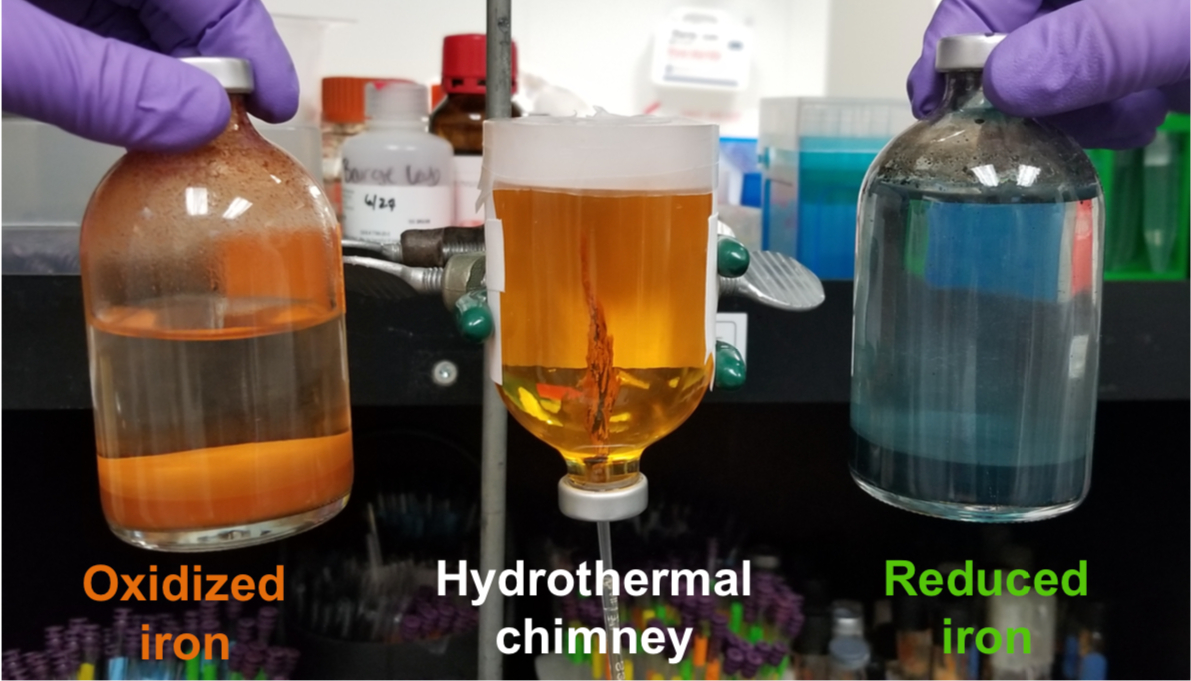
Image credit: L. Barge / NASA JPLResearchers from the NAI JPL Icy Worlds team report that gradients of redox and pH in iron minerals can drive the formation of prebiotic organic molecules.
The early Earth had no atmospheric O2 – which resulted in an ocean where iron could remain dissolved in the ocean and precipitate as highly reactive minerals. These iron hydroxides in seafloor sediments and hydrothermal chimneys range from more oxidized (red rust) to more reduced (green rust) – each having different ability to catalyze organic prebiotic reactions, and form amino acids.
Amino acids only form when the mineral contains both oxidized and reduced iron, and ...
Source: [PNAS]
April 18, 2019 • Written by: Laura Barge et al. • Report issue
-
A Researcher’s Hunt for Extraterrestrial Intelligence
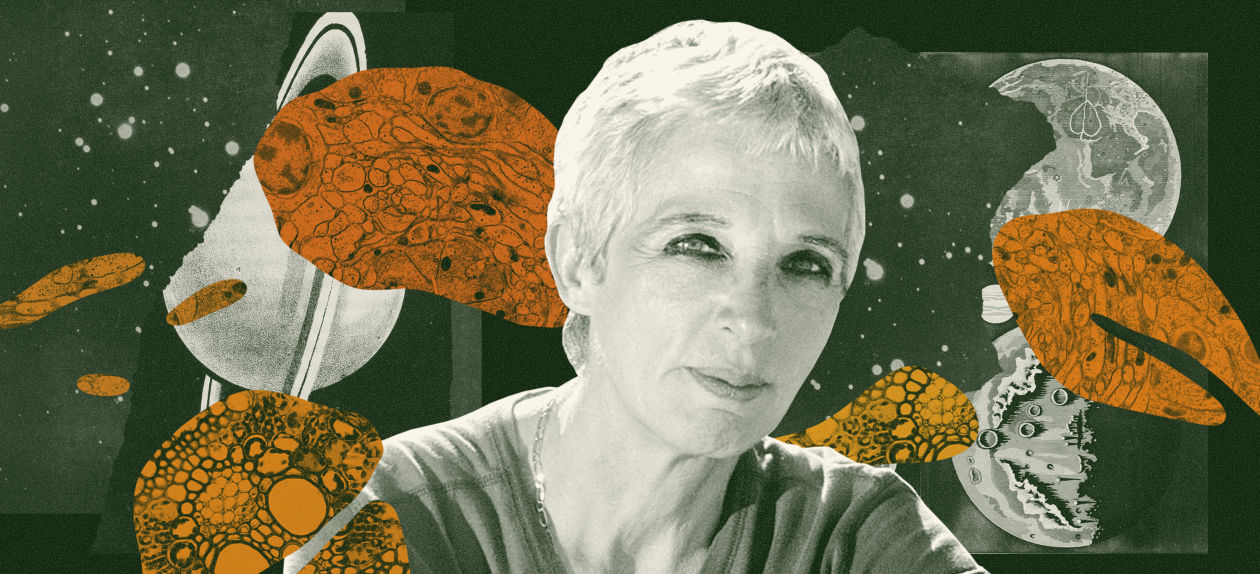
Dr Nathalie Cabrol. Illustration: Mark WeaverExcerpted from the story by Adam Mann:
Our first encounter with extraterrestrial life won’t be with little green men—it’ll likely be with little green microbes, says astrobiologist Nathalie Cabrol.
Dr. Cabrol is at the forefront of the hunt for life off Earth. She works at the Search for Extraterrestrial Intelligence, or SETI, Institute, a nonprofit based in Mountain View, Calif. SETI scientists have worked with the National Aeronautics and Space Administration, the National Science Foundation and universities to develop instruments for probes to Mars, Jupiter, Saturn and Pluto.
Dr. Cabrol spoke with The Future of Everything about ...
Source: [The Wall Streer Journal]
April 16, 2019 • Posted by: Yael Kovo • Report issue
-
New NASA Documentary Series: Astrobiology in the Field!
The first episode, premiering April 4th, follows the Field Exploration and Life Detection Sampling for Planetary and Astrobiology Research (FELDSPAR) scientific expedition team as they travel to Iceland.
Read the full story by Mike Toillion at the Astrobiology at NASA website.
Astrobiology in the Field, Episode 1: Iceland Trailer
Source: [Astrobiology at NASA]
April 02, 2019 • Posted by: Miki Huynh • Report issue
-
A Unique Concentration of Postdoctoral Talent
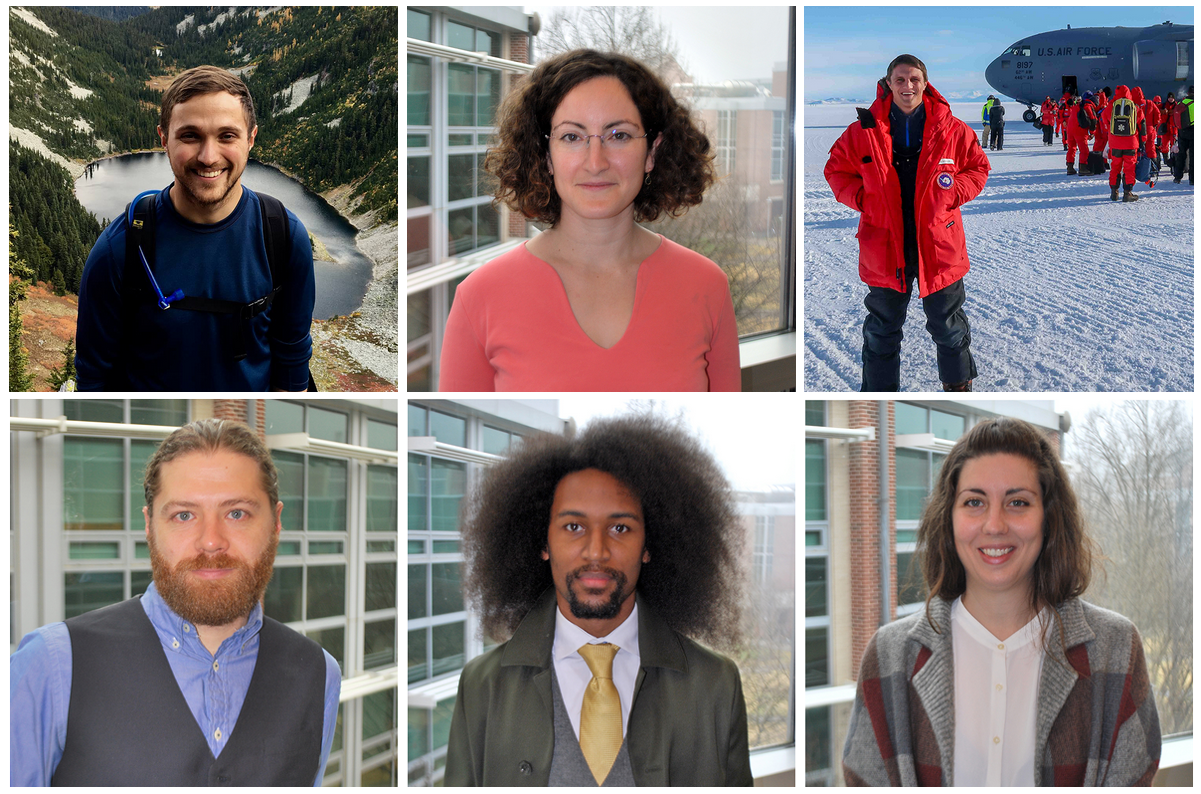
NPP fellows at Georgia Tech. Top row, left to right: Peter Conlin, Moran Frenkel-Pinter, Andrew Mullen. Bottom row, left to right: Micah Schaible, Nicholas Speller, Nadia Szeinbaum. More information about each postdoc and their research focus is available at the Georgia Tech website.Excerpted from Georgia Tech:
Among the most coveted postdoctoral appointments are those from the NASA Postdoctoral Program (NPP). These fellowships offer early-career researchers “the opportunity to share in NASA’s mission, to reach for new heights, and to reveal the unknown so that what we do and learn will benefit all humankind,” NPP says.
The Georgia Institute of Technology College of Sciences is the proud host of six NPP fellows advancing NASA’s mission in astrobiology and solar system exploration. The concentration of talent testifies to Georgia Tech’s vibrant astrobiology and space science research communities.
Peter Conlin
Ph.D ...Source: [Georgia Tech]
April 01, 2019 • Posted by: Miki Huynh • Report issue
-
Yellowstone Hot Spring Supports a Hyperdiverse Microbial Community
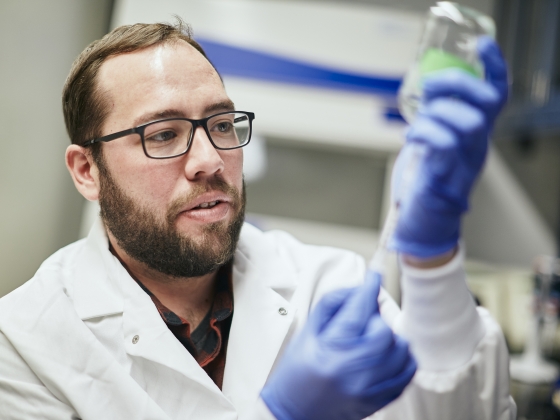
Dan Coleman, assistant research professor in the Department of Microbiology and Immunology at Montana State University, takes samples of microbial cultures. His recent study examines the relationship between microbial diversity and the chemical conditions found in a hot spring in Yellowstone National Park. Image source: MSU / Adrian Sanchez-GonzalezScientist Dan Coleman and his team at Montana State University, supported in part by the NASA Astrobiology Institute team based at the University of Colorado Boulder, have found an impressive abundance of microbial diversity in a hot spring in Yellowstone National Park. This hot spring, Smoke Jumper 3 (SJ3), exhibits extreme chemical disequilibrium due to a mixing of reduced volcanic gases with oxidized surface water.
The research, published in Nature Communications, digs into how and why the fluid mixing allows SJ3 to generate and support a more diverse range of microbial life than other hot springs. The discovery could help ...
Source: [Nature Communications (via MSU)]
March 29, 2019 • Posted by: Miki Huynh • Report issue
-
Origins of Life, Artificial Life, & Astrobiology (OoLALA) Research Showcase: Searching for the Laws of Life

The Origins of Life, Artificial Life, & Astrobiology (OoLALA) Research Showcase highlights advances in research into life’s origins, distribution, and future in the universe. The lectures can be streamed live.Coming up: Sara Walker: “Search for the Laws of Life,” Thursday, March 28, 2:30-3:30pm PST
Currently we do not know what life is, or whether there exist universal laws – in the same sense the laws of physics and chemistry are universal – that describe life. While this may not matter so much for the study of life as it exists at present or in the past on Earth, it is critically important in the field of astrobiology, which seeks to understand life not just on Earth but anywhere in the universe. In this talk I discuss new approaches to ...
Source: [Wisconsin Institute for Discovery (WID) and Women in Science & Engineering Leadership Institute]
March 25, 2019 • Posted by: Miki Huynh • Report issue
-
Carbon Monoxide Detectors Could Warn of Extraterrestrial Life

A rocky planet orbiting Proxima Centauri might sustain liquid water (artist’s depiction). Credit: NASA, ESA, G. Bacon (STSc)For some distant worlds, carbon monoxide may actually be compatible with a robust microbial biosphere.
Carbon monoxide detectors in our homes warn of a dangerous buildup of that colorless, odorless gas we normally associate with death. Astronomers, too, have generally assumed that a build-up of carbon monoxide in a planet’s atmosphere would be a sure sign of lifelessness. Now, a UC Riverside-led research team is arguing the opposite: celestial carbon monoxide detectors may actually alert us to a distant world teeming with simple life forms.
“With the launch of the James Webb Space Telescope two years from now, astronomers ...
Source: [UC Riverside]
March 19, 2019 • Written by: Sarah Simpson • Report issue



